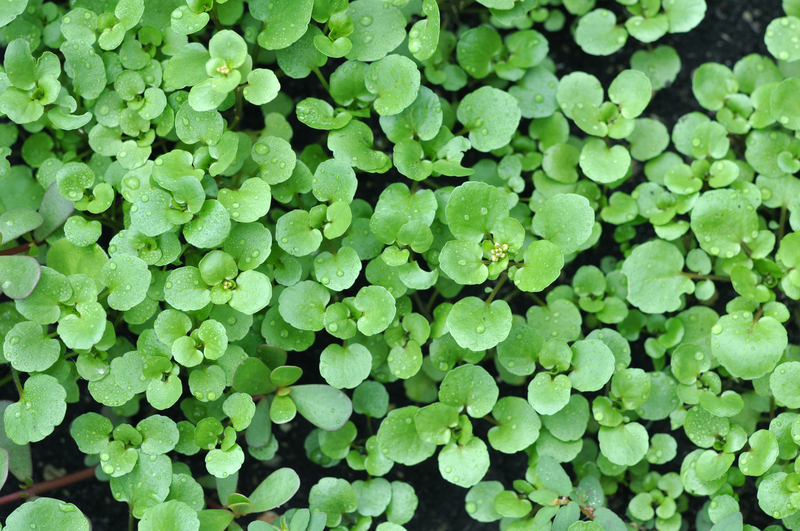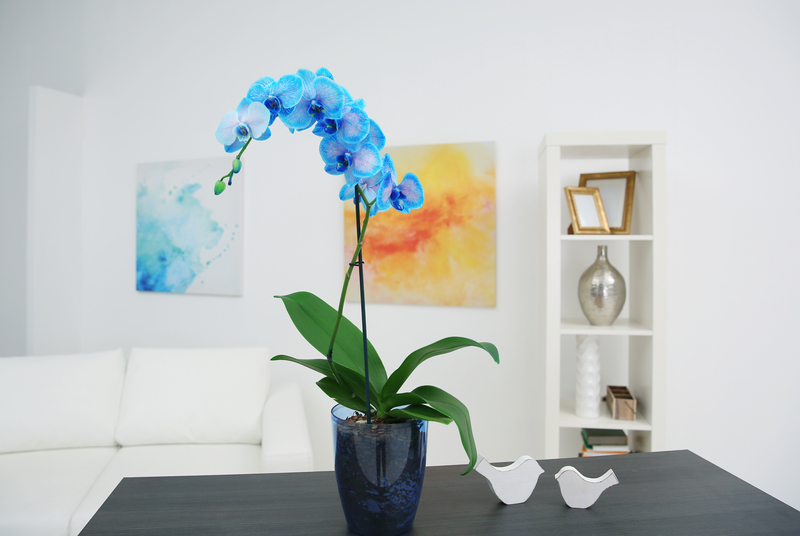Sow What's Possible: 9 Essential Tips for New Gardeners
Posted on 14/08/2025
Sow What's Possible: 9 Essential Tips for New Gardeners
Starting a garden is an exciting journey. Whether you're dreaming of colorful flower beds, crisp homegrown veggies, or a lush urban oasis, getting your hands in the soil is the first step toward a healthier, more sustainable lifestyle. But where should you begin? With so much information out there, the world of gardening can seem overwhelming. Don't worry--this comprehensive guide will walk you through everything you need to know to sow what's possible and cultivate a thriving garden, even if you've never planted a seed before.
Why Consider Gardening?
Before diving into vital gardening tips, let's understand why so many people are drawn to growing their own plants:
- Health benefits: Gardening encourages outdoor activity, provides fresh food, and reduces stress.
- Environmental impact: By growing your own produce or flowers, you lower your carbon footprint and support local biodiversity.
- Satisfaction: Watching seeds sprout under your care is immensely rewarding. Every harvest feels like a personal triumph!
If you're ready to nurture life from the ground up, these essential tips for new gardeners will set you on the right path.

1. Start Small and Simple
It's tempting to carve out an ambitious plot brimming with plants you've never seen before. But start small to avoid feeling overwhelmed. Container gardens, window boxes, or a 4x4 foot raised bed provide manageable beginnings. Focus on a handful of easy-to-grow crops such as lettuce, radishes, or marigolds. This lets you master basics before scaling up your gardening adventure.
Recommended for Beginners:
- Herbs: basil, mint, chives, and parsley
- Vegetables: cherry tomatoes, lettuce, bush beans
- Flowers: marigolds, calendula, zinnias
2. Know Your Growing Zone
Understanding your climate is crucial for gardening success. Every region has a unique USDA Plant Hardiness Zone (or a similar local guide), which indicates what will thrive in your temperature range. Selecting plants suited to your zone increases productivity and minimizes disappointment.
How to find your gardening zone:
- Visit the USDA Plant Hardiness Zone Map online and locate your region.
- Check local gardening stores for zone-friendly plant tags.
- Speak with neighbors or local gardeners for insights.
3. Choose the Right Plant Location
A plant's position can make or break its success. Most herbs and vegetables need a minimum of 6 hours of sunlight daily. Watch your yard, balcony, or windows to determine where the sun shines longest throughout the day. Also, consider proximity to water and protection from wind or extreme weather. Remember: good placement is essential for healthy roots and steady growth.
Tips for Selecting the Best Spot:
- Observe your space for consistent sunlight patterns.
- Plant tall species on the north or east side so they don't shade smaller plants.
- Ensure easy access for regular watering and harvesting.
4. Test and Prepare Your Soil
Great gardens start with great soil! Most plants flourish in well-drained, nutrient-rich soil. You don't need fancy equipment--a simple test kit or a DIY pH test can tell you if amendments are needed. If your space lacks good soil, container gardening or raised beds packed with high-quality mixes are smart alternatives.
To improve your soil, blend in:
- Compost: adds nutrients and organic matter
- Peat moss or coconut coir: improves moisture retention
- Perlite or sand: increases drainage
- Organic fertilizers: supports robust plant health
Regularly observe your soil's texture and moisture--Healthy earth should feel rich and crumbly, not sandy or sticky.
5. Master Watering Techniques
Both under-watering and over-watering are common pitfalls for new gardeners. Most plants like deep but infrequent watering, which encourages roots to grow strong. Water early in the morning to reduce evaporation and fungal diseases. Check soil moisture before watering--stick your finger in; if the top few inches feel dry, it's time for a drink!
How Much Should You Water?
- Seedlings: Keep soil consistently moist but not soggy.
- Established plants: Water deeply 1-2 times per week, more in hot weather.
- Containers dry out faster than ground soil. Monitor them closely!
6. Fertilize Wisely
Your plants need more than just water and sunlight--they rely on nutrients to grow.
Organic fertilizers (like compost, worm castings, or seaweed extracts) are beginner-friendly and safe for the environment. Follow package directions for any commercial products, since over-fertilization can do more harm than good.
- Tip: When in doubt, choose slow-release options for steady nutrition without the risk of "burning" your plants.
Always keep in mind the specific requirements of what you're growing--leafy greens love nitrogen, root veggies prefer more phosphorus, and fruiting plants (like tomatoes) benefit from a balanced blend.
7. Understand Pruning and Plant Care
Successful gardens require ongoing attention. Regularly check for damaged, diseased, or dead foliage and remove it promptly. Pruning encourages healthy new growth and can enhance air circulation, reducing pest and disease risks.
Common mistakes: New gardeners often hesitate to prune, but trimming is beneficial for most plants. Invest in a quality pair of hand pruners appropriate for your garden's scale.
Quick Pruning Tips
- Pinch back herbs like basil to promote bushier growth.
- Remove faded flowers (deadheading) for extended blooms.
- Trim tomatoes to focus the plant's energy on fruit production.
8. Keep Pests and Diseases in Check
Every garden will attract insects and potential diseases--but with vigilance and natural solutions, you can keep problems under control.
Encourage beneficial insects like ladybugs and bees by growing pollinator-friendly flowers. Use mulch to suppress weeds and retain moisture. For pests, try eco-friendly soap sprays, hand-picking, or natural deterrents (like garlic or neem oil) before reaching for chemicals. Rotate crops yearly to reduce the risk of soil-borne diseases.
- Pro tip: An occasional insect or blemish is normal! Avoid panic, and focus on creating a healthy, diverse ecosystem.
9. Practice Patience and Keep Learning
No one becomes a master gardener overnight. Embrace mistakes as learning opportunities--each season will teach you something new. Join a local gardening club, participate in community gardens, or follow gardening blogs and social media groups to exchange experiences.
Keep a garden journal to note planting dates, harvests, successes, and failures. This will be invaluable as your gardening knowledge grows year after year.
Bonus: Gardening Tools Every New Gardener Needs
- Hand trowel: Perfect for planting and transplanting.
- Watering can or hose: Choose one with a gentle spray to avoid disturbing young roots.
- Pruners: For trimming stems and deadheading flowers.
- Garden gloves: Protects hands from thorns and dirt.
- Garden fork or hoe: For loosening soil and digging.
Sow What's Possible: Real-Life Inspiration
Meet Jane, a busy urban dweller. She started with just a window box and a packet of basil seeds. Through trial and error, she soon added tomatoes, peppers, and flowers. Today, Jane's humble apartment balcony bursts with color and flavor--and she's living proof that any space can nurture a bountiful garden.
Your own journey begins with a single choice to plant a seed. With these nine essential tips, anyone can sow what's possible--regardless of experience, space, or climate. Make this season your greenest one yet!

Frequently Asked Questions for New Gardeners
- How do I choose the right seeds for my garden?
Look for seed packets labeled for your USDA Hardiness Zone. Start with easy-to-grow varieties (like beans and lettuce) before advancing to more challenging plants. - When should I start planting?
Timing depends on your climate. Refer to a planting calendar for your area and remember: spring and fall are prime planting seasons for most regions. - Do I need expensive equipment to start gardening?
Absolutely not! Simple hand tools, quality soil, and seeds are all you need as a beginner gardener. As your skills expand, so can your toolkit.
Conclusion: The Joy of Growing Your Own
With a dash of patience and a sprinkle of enthusiasm, every novice gardener can nurture a verdant sanctuary. Whether your goal is to savor sun-ripened tomatoes, enjoy fragrant blooms, or simply unplug from daily stress, gardening offers a world of possibility right at your fingertips. By following these essential gardening tips for beginners, you can create a thriving, beautiful space that nourishes both body and soul.
Ready to dig in? Start your journey today--plant a seed, water with care, and watch as your garden (and your confidence) grows!



